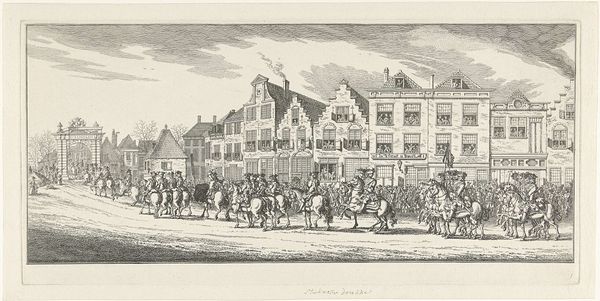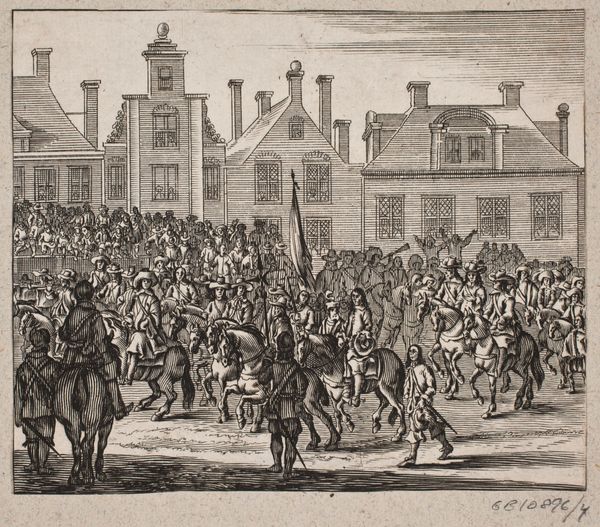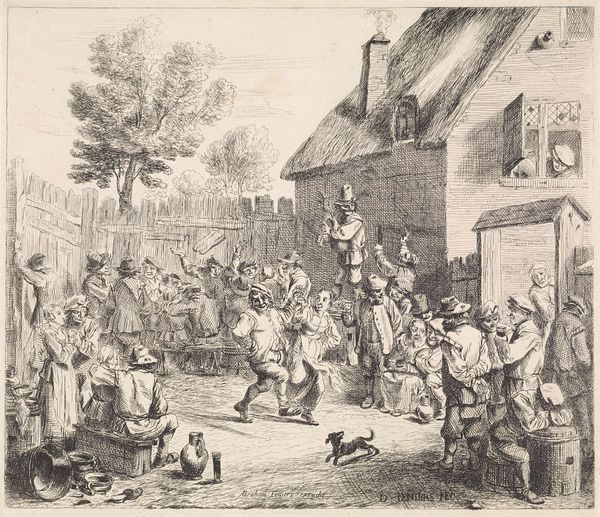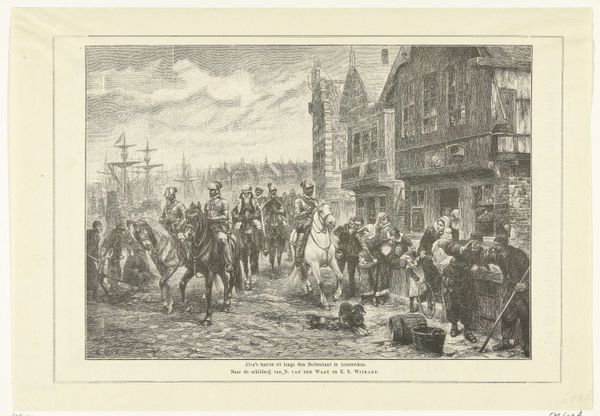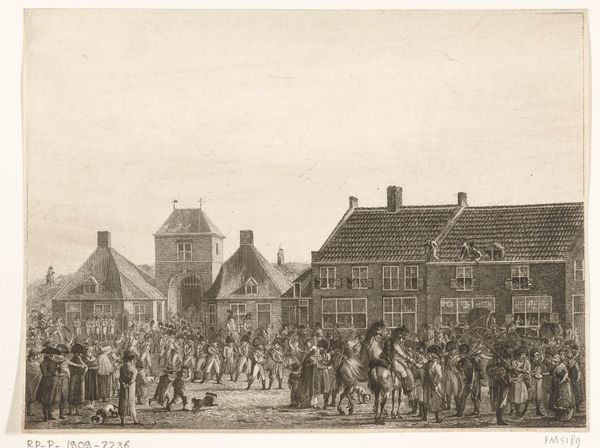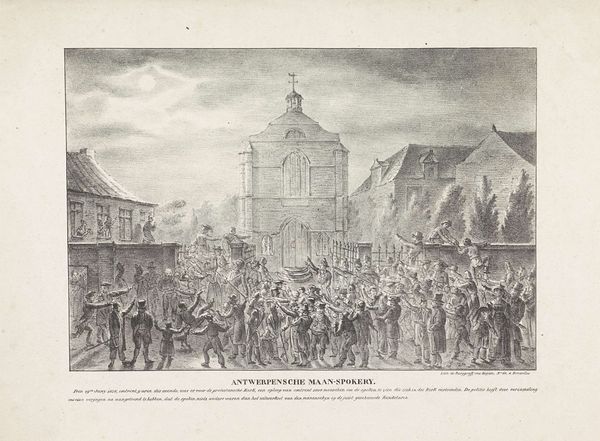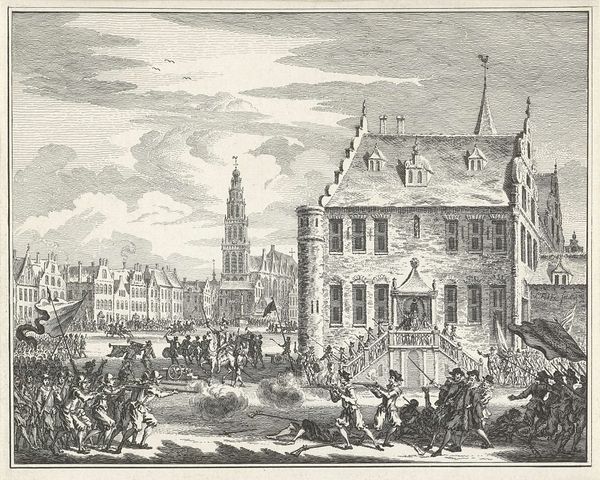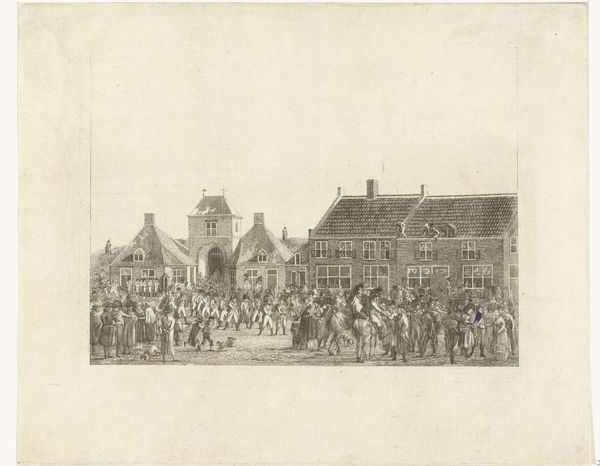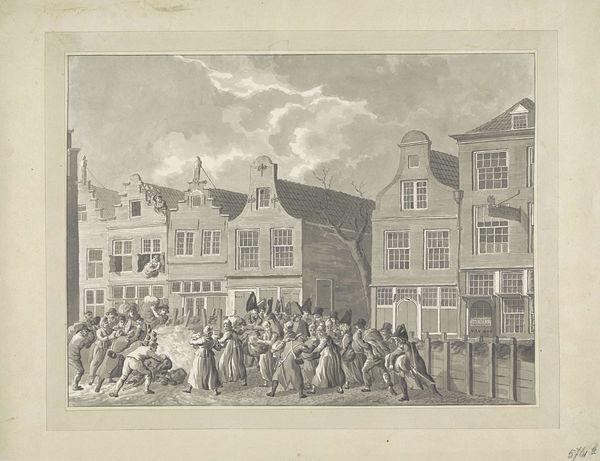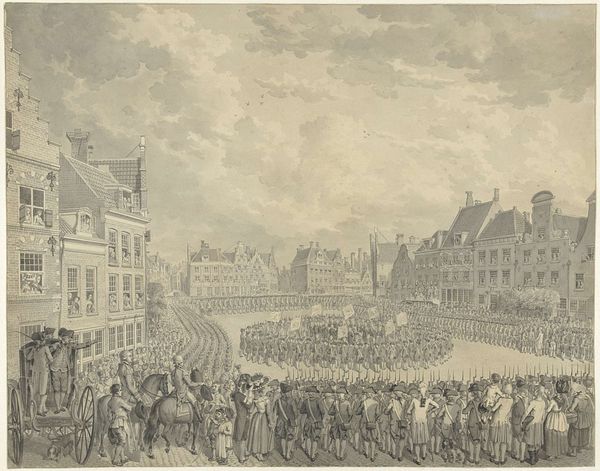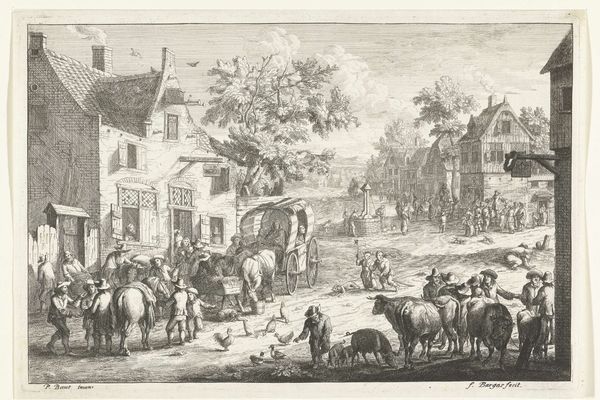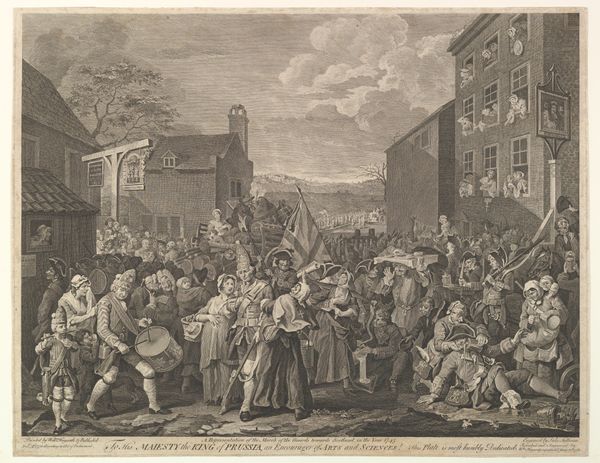
drawing, graphite
#
drawing
#
neoclacissism
#
pencil sketch
#
graphite
#
cityscape
#
genre-painting
#
realism
Dimensions: height 335 mm, width 450 mm
Copyright: Rijks Museum: Open Domain
Editor: So, this is "Bezwijking van de bekisting langs de Kortendijk in Gorinchem, 1809," a graphite and pencil drawing by A. Lutz. It depicts a bustling cityscape scene. There's a real sense of activity and maybe even a bit of chaos happening. What jumps out at you when you look at this piece? Curator: For me, it's the documentation of labor and infrastructure using graphite and pencil that’s interesting. We see a group working; likely, this relates to the repairs following some type of infrastructural collapse. We see them, buckets in hand. Editor: Right, and there’s a fascinating contrast. We have the detailed architecture in the background made permanent, almost rigid, by the very pencil that captures the temporary chaos on the street. Curator: Exactly! Consider the availability of graphite and paper in 1809, who was commissioning and consuming such images? It documents the activity and uses those material properties in compelling contrast to the fragility of these buildings. Who is performing the labor? How does this labor facilitate capitalism in that period? How did the cost of these materials define its accessibility for some and not for others? Editor: It’s also compelling how the scene’s almost "genre-painting" realism clashes a little with the formal cleanliness we might associate with Neoclassicism, doesn't it? How do we reconcile that contrast? Curator: Well, how does this capture and, dare I say, romanticize labour, with the style and artistic license of a historical moment? And why do that labor, in particular? Editor: I hadn't considered how romanticizing it might mask something. Seeing it as a question of class and who’s depicted shifts the whole context for me. Curator: Precisely! Focusing on materials, the graphite, the paper, allows us to explore those social and economic forces at play in 1809.
Comments
No comments
Be the first to comment and join the conversation on the ultimate creative platform.
